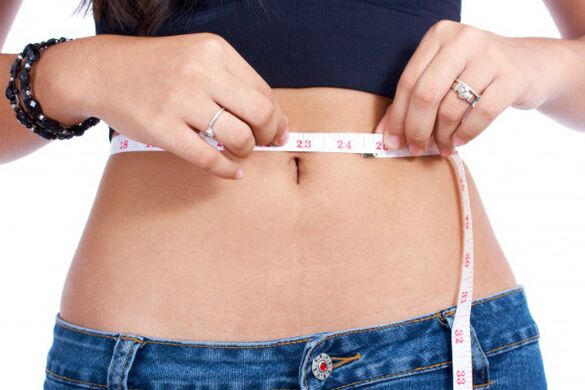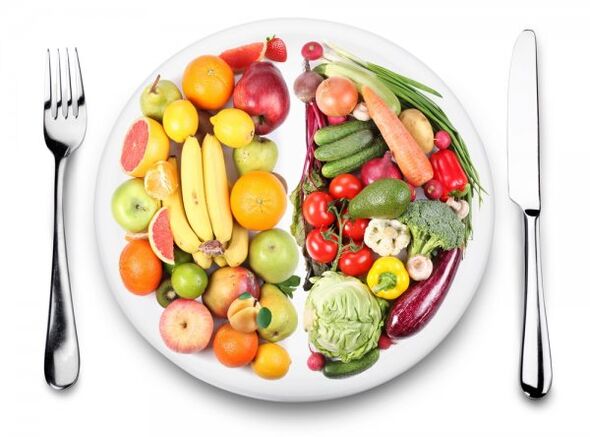The rapidly gaining popularity of the Japanese seven-day diet without salt for weight loss is attracting the attention of an increasing number of modern women. The proposed article on a similar dietary principle will help develop the menu and see amazing results. In the Land of the Rising Sun, a woman with curves can rarely be seen. What is the secret of the Japanese? Climatic conditions, genetic factor or the secret lies in the peculiarities of Japanese cuisine? And, most importantly, can European women achieve such a result? Why not. You just need to use a developed Japanese diet for 7 days. But before embarking on "oriental weight loss", you need to get to know him better and find out what are the principles of such a diet, how they are applicable in our country, what are the advantages, disadvantages and contraindications of this type of weight loss.

Basic principles of "Japanese weight loss"
The reason for the popularity of the Japanese diet for weight loss is the fact that the Japanese are considered the healthiest nation on the planet. This is stubbornly proven by the fact that this country has the highest percentage of centenarians, overweight and obese foreigners. In addition, according to statistics, the Japanese rarely suffer from diseases related to the cardiovascular system, and their intellectual potential has long been envied by the whole world. In addition, the Japanese lead an active lifestyle, walking, cycling. Let’s consider the basic principles of "Japanese weight loss" and understand the mechanism of their action.
All these data interested doctors and nutritionists and prompted them to study the Japanese food system. Analyzing the diet with this method, nutritionists agreed that the duration of the Japanese diet should be 14 days to achieve results. At the same time, the menu is calculated for a week, provided that the diet can be restarted from the eighth day. Thus, the basic principles of the Japanese diet for weight loss for 7 days were derived.

- For effective weight loss, eat food in small portions. The Japanese diet is focused on results, so it is against overeating. That is why it is common in Japan to eat with special sticks, which allow you to slowly absorb food without haste. And, as you know, the slower a person eats, the faster the feeling of hunger passes.
- During the Japanese diet without salt, the use of sugar, salt and spices of any kind is forbidden.
- Sweets and pastries should be excluded from the diet. You have to eat rice instead of bread. It is the main food of the Japanese, much healthier than bread products, which contain a lot of sugar and starch.
- It is necessary to take into account the quality of food and preserve the useful properties of the product during cooking. In Japan, you don't eat "overcooked" food, and all food is cooked lightly. You also have to give up fatty "heavy" sauces and replace them with soups.
- Of the drinks, preference should be given to green tea and clean water, the volume of which should be at least one and a half liters per day.

How does the Japanese diet work?
Despite the fact that the 7-day Japanese diet is considered by many to be unsafe, rigid and inefficient, its popularity is constantly growing. This is due to the fact that more and more people want to lose extra pounds quickly in a short amount of time. Let’s look at how the Japanese diet works and what safety principles should be adhered to. The secret behind the amazing results of the Japanese diet is that people eat foods rich in protein and carbohydrates for seven to fourteen days and skip all fatty foods. This reduces the daily calorie intake, which is necessary for a normal life.
The fact is that, sitting on a diet, a person tries to significantly reduce the amount of food consumed. However, the habit of eating a lot and satisfactorily negatively affects a sharp change in diet, the body experiences stress, which does not allow to protect the body from the constant feeling of hunger. The Japanese 7-day diet guarantees a lasting result, because the dishes included in the list of allowed are quite satisfactory, because they are rich in protein and protein. A small portion is enough to satisfy hunger and restore strength, but at the same time weight loss will not consume extra calories.
Japanese diet menu for 7 days: what and how can you eat?
In order for the Japanese diet to be balanced, it is important to include real foods in your diet. Important components of the Japanese diet are seafood, rice, vegetables and fruits (except bananas and grapes), boiled meat, eggs, olive oil, fermented milk and soy products. The menu of the Japanese diet for 7 days in an approximate version is shown on this page below. It talks about how and what you can eat in principle, and what should be discarded.
In order for the result of the diet not to wait long, you must eat in small portions, drink enough water to remove toxins from the body.
For convenience, it is recommended to compile a weekly menu of the Japanese diet and strictly adhere to such a food system. Experienced weight loss experts advise that before starting the weight loss process, buy everything you need to prepare a meal so that you do not have to go to the store later and be tempted by banned products. An example of a 7-day menu for the Japanese diet is shown below.
The Japanese salt-free diet is very difficult and complex. To make it easier to endure, it is necessary to go towards the set goal impartially. Every morning on an empty stomach you should drink a glass of water with a little lemon juice (approximately one tablespoon per glass). It stimulates the removal of toxins and toxins from the body, improves metabolic processes.

The first day
- Breakfast: green tea or coffee, drinks should be drunk without added sugar and / or milk;
- Lunch: 2 boiled chicken eggs, cabbage salad or cabbage without meat stewed in tomato, a glass of tomato juice without additional salt;
- Dinner: 200 grams of boiled or stewed fish.
Other day
- Breakfast: a small piece of black or rye bread, you can take soft bread, coffee without sugar and milk;
- Lunch: 200 grams of cooked fish, cabbage salad with olive oil, a glass of tomato juice without additional salt;
- Dinner: 100 grams of cooked meat and a glass of kefir.
Third day
- Breakfast: coffee without sugar and milk, biscuits (2-3 pieces);
- Lunch: fried vegetables in vegetable oil (except potatoes);
- Dinner: 200 grams of cooked meat, cabbage salad, 2 hard-boiled eggs.
Fourth day
- Breakfast: 100 grams of stewed vegetables, coffee without sugar and milk;
- Lunch: 200 grams of cooked fish, a glass of tomato juice without salt;
- Dinner: 200 grams of any fruit except bananas and grapes.
Day 5
- Breakfast: 100 grams of stewed vegetables, coffee without sugar and milk;
- Lunch: 200 grams of cooked lean meat, a glass of tomato juice without added salt;
- Dinner: 200 grams of any fruit except bananas and grapes.
Sixth day
- Breakfast: coffee without sugar and milk;
- Lunch: unsalted chicken (300 grams), cabbage salad with vegetable oil, a glass of kefir;
- Dinner: 2 hard-boiled eggs, 200 grams of stewed vegetables (except potatoes).
Seventh day
- Breakfast: green tea;
- Lunch: 200 grams of cooked lean meat;
- Dinner: 200 grams of cooked unsalted lean meat, cabbage salad with vegetable oil, a glass of kefir.
At the end of the week, the scales will show a response of 5-7 kilograms. If you need to lose more, you need to go to the second round of the Japanese diet. After that, you should definitely take a break and start returning to this method of dealing with excess weight at the earliest six months later.

Results, advantages and disadvantages of the Japanese diet
All the advantages and disadvantages should be viewed through the prism of achieving the set goal. The results of a 7-day Japanese weight loss diet are impressive in the rate of weight loss by removing excess fluid from the body. As a rule, 5 to 7 kg of weight is lost per week. The benefits of the Japanese diet include rapid weight loss, removal of toxins and toxins from the body, and improved metabolism in the body. Due to weight loss the work of the joints is normalized, the body feels light. In addition, given the financial cost, the Japanese diet is cheap compared to other methods.
The disadvantages of the Japanese diet are its sharpness and unstable results. Lack of fat and salt in the weekly diet encourages the removal of excess fluid from the body, leading to rapid weight loss. As soon as these foods return to the diet, the weight starts to rise again. To try to slow down this process, you need to get out of your diet properly and gradually include forbidden foods in your menu if there is no way to completely abandon them.
Getting out of the Japanese diet
As at the end of the weekly "fast" and weight loss the pounds do not return, you need to get out of the diet properly. Leaving the Japanese diet should be smooth and gradual. The following rules will help consolidate the results obtained with the Japanese diet for 7 or more days.
- A drastic change in diet is not recommended; forbidden or restricted foods should be added gradually, in small portions.
- As the body adapts to new dietary conditions, salt and sugar should be ingested gradually, as these products can retain fluid in the tissues and turn into fat deposits.
- In the first few weeks, dinner should be done the way it was during the diet, ie. protein. It is forbidden to eat 2 hours before bedtime.
- The minimum period of adaptation of the organism after the Japanese diet is 15 days.
To whom the Japanese diet is contraindicated
No matter how much everyone wants to lose weight, there are numerous contraindications according to which it is forbidden to go on the Japanese diet, because it is fraught with deteriorating health. The risk group for which the Japanese diet is contraindicated includes:
- pregnant and lactating women;
- children under the age of 18;
- people with diabetes;
- persons with chronic and acute diseases.
The weight loss process on the Japanese diet will be different for everyone, because each organism has its own special characteristics. In order to consolidate the result achieved for a long time, after the diet, it is necessary to revise the principles of your diet, exclude fats and simple carbohydrates and limit salt intake. This will help not only in maintaining good physical shape, but also in healing the whole body.
















